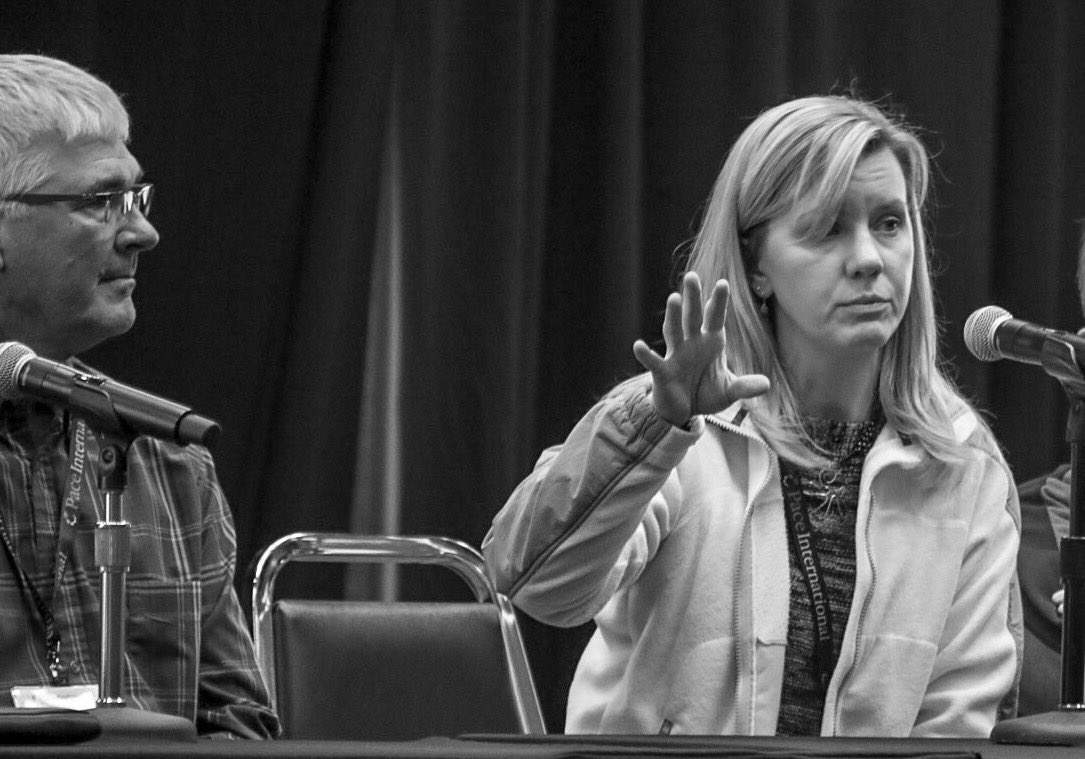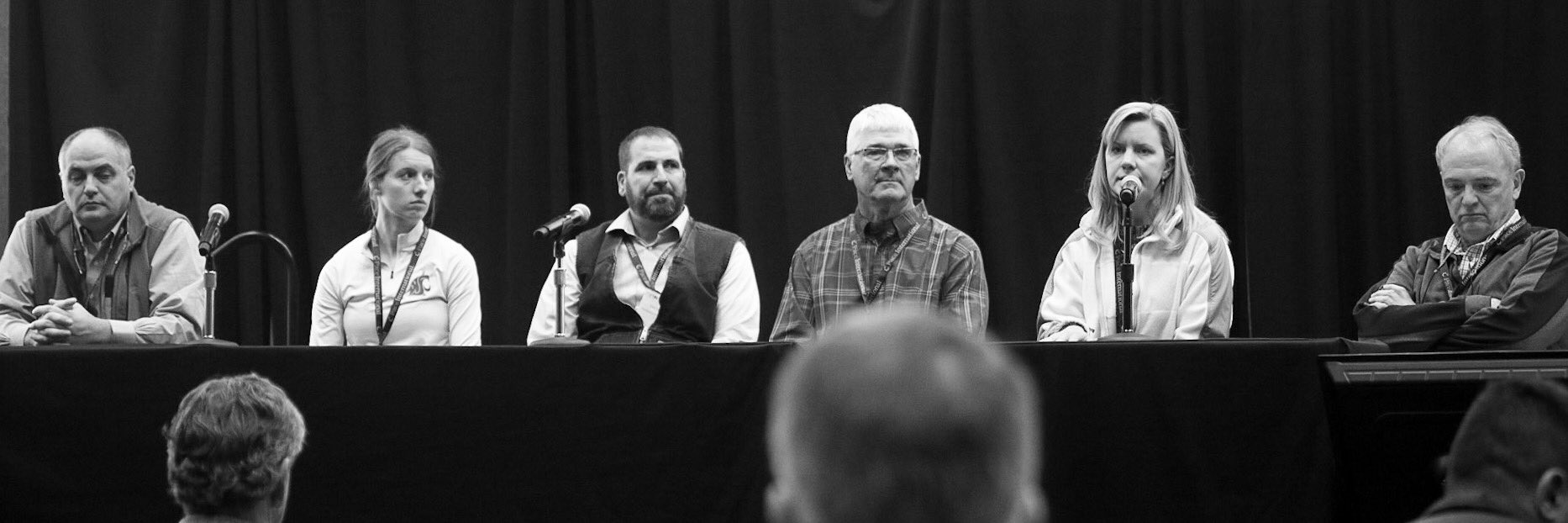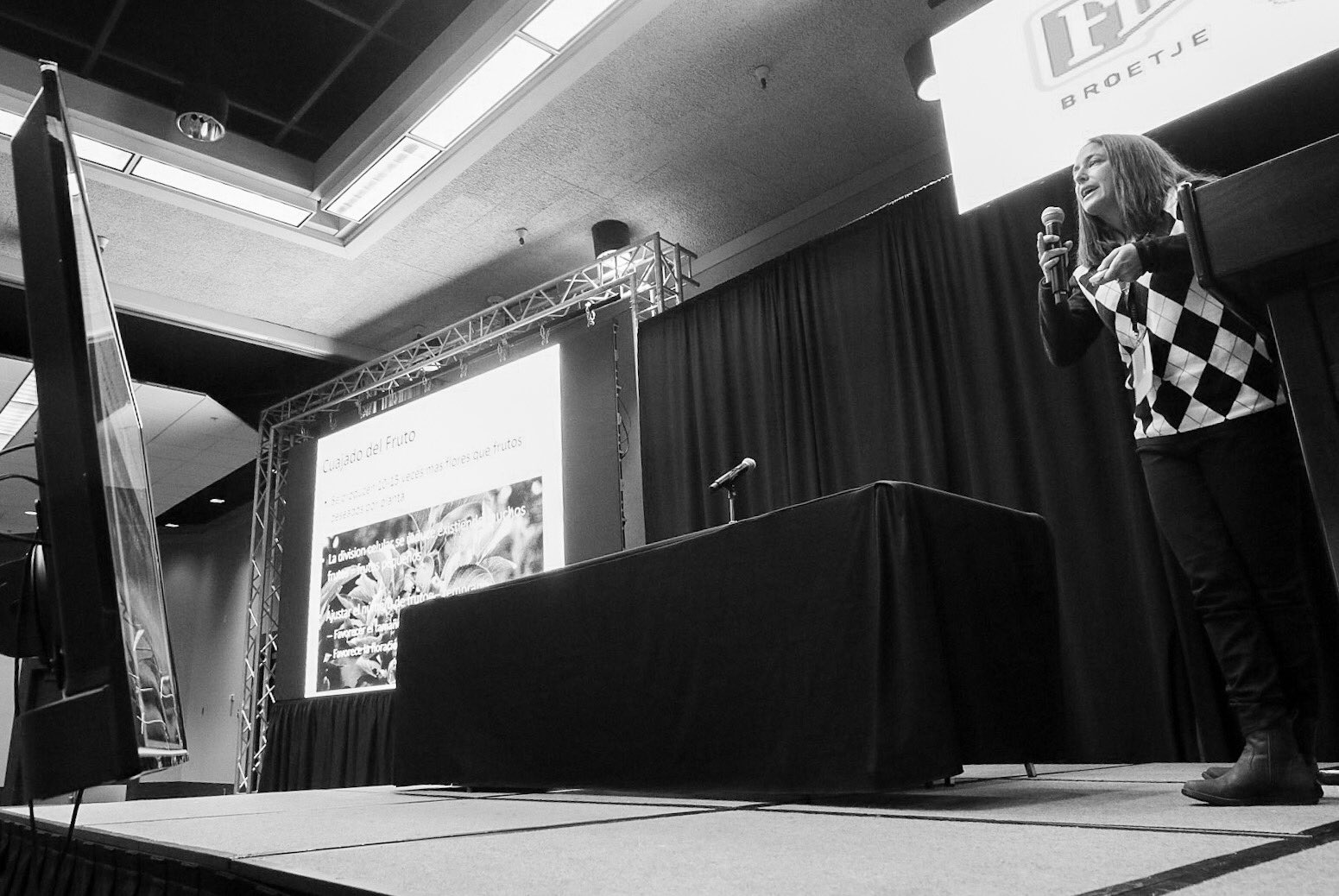
Many of Tuesday morning’s sessions were very popular, including the fire blight presentation. (TJ Mullinax/Good Fruit Grower)
When the Washington State Tree Fruit Association’s annual meeting resumed on Tuesday morning, the session on fire blight was packed with hundreds of growers. A high-pressure year across much of the state no doubt spurred the interest.
Two pathologists from the eastern U.S., where wet weather means fire blight is a constant threat, presented on recent research efforts.

Penn State pathologist Kari Peter shares insight from research into plant defense elicitors, with the goal of finding fire blight control that doesn’t slow down tree growth. (TJ Mullinax/Good Fruit Grower)
Kerik Cox, a Cornell University pathologist, discussed his efforts to see if mechanical blossom thinning and hedging caused an increase in fire blight risk.
Contrary to public perception, he said that the risks seem minimal, especially if you follow a thinning or hedging pass with antibiotics in a high-risk scenario, such as highly susceptible cultivars or you know there is blight present in the block.
He also shared insights from a preliminary trial using Apogee and Regalia at pink to reduce flower infections that can lead to devastating shoot blight.
The challenge is that “however vigorous your trees are growing, that’s how vigorous the fire blight is growing,” Cox said, and growers want to control fire blight without sacrificing growth, especially in young blocks.

Kari Peter: I do know that fire blight can spread from a dirty block to a clean block with certain weather patterns and the right conditions. I don’t believe it’s the norm though. (TJ Mullinax/Good Fruit Grower)
Kari Peter, a pathologist at Penn State University, then followed up on the theme of controlling blight without limiting growth by presenting her findings on a group of products known as plant defense elicitors.
Actiguard is the best known defense elicitor, but there are others as well with varying rates of effectiveness that seem dependent on tree age, among other factors.
“I love Actiguard. In the greenhouse we see 78 to 95 percent control,” with the product, she said. But the timing of when you apply it, relative to the infection point, makes a big different in its efficacy, she added.
Mark LaPierre of Wilbur-Ellis and Neil Johnson of North West Wholesale strongly urged growers to make a plan for fire blight control ahead of time. Pre-identify your young blocks and high risk blocks. They also recommended no irrigation before bloom. “Trees recover from water stress, they usually don’t recover from fire blight,” Neil Johnson said.

Ken Johnson, Oregon State University said fire blight spread can come from old cankers, ooze drops and places where the pathogen can overwinter. (TJ Mullinax/Good Fruit Grower)
Ken Johnson, a researcher from Oregon State University, stressed that the disease can still bite after bloom. In fact, in his research blocks, one week after petal fall showed the highest inoculum.
He recommends copper treatments at green tip if the orchard had infection the year before. Lime sulfur works well, he said, because it thins flowers, leaving fewer blooms to infect, but it also can counteract Blossom Protect.
A session-ending panel of supply company representatives and researchers fielded dozens of questions but reaffirmed one of the main lessons about fire blight: The only surefire way to get rid of it is to cut it out.

Kari Peter: Fire blight — There’s no debate. There are no good cankers. Get the dead wood out. (TJ Mullinax/Good Fruit Grower)
Watch our session wrap with Kari Peter and Ken Johnson
Also Tuesday morning…

Maria Fernandez presented information about how Good Fruit Grower serves the tree fruit industry, in Spanish. (TJ Mullinax/Good Fruit Grower)

Bernardita Sallato talked about the physiology of fruit trees during one of Tuesday’s Spanish sessions. (TJ Mullinax/Good Fruit Grower)

It wouldn’t be a hort show without some little technical difficulty and a dramatic save. Today’s came when Mario Miranda Sazo’s remote Spanish session audio went out and the WSTFA team, including Bernardita Sallato, mic’d up a phone to save the day. (TJ Mullinax/Good Fruit Grower)
– by Kate Prengaman and Ross Courtney






Leave A Comment